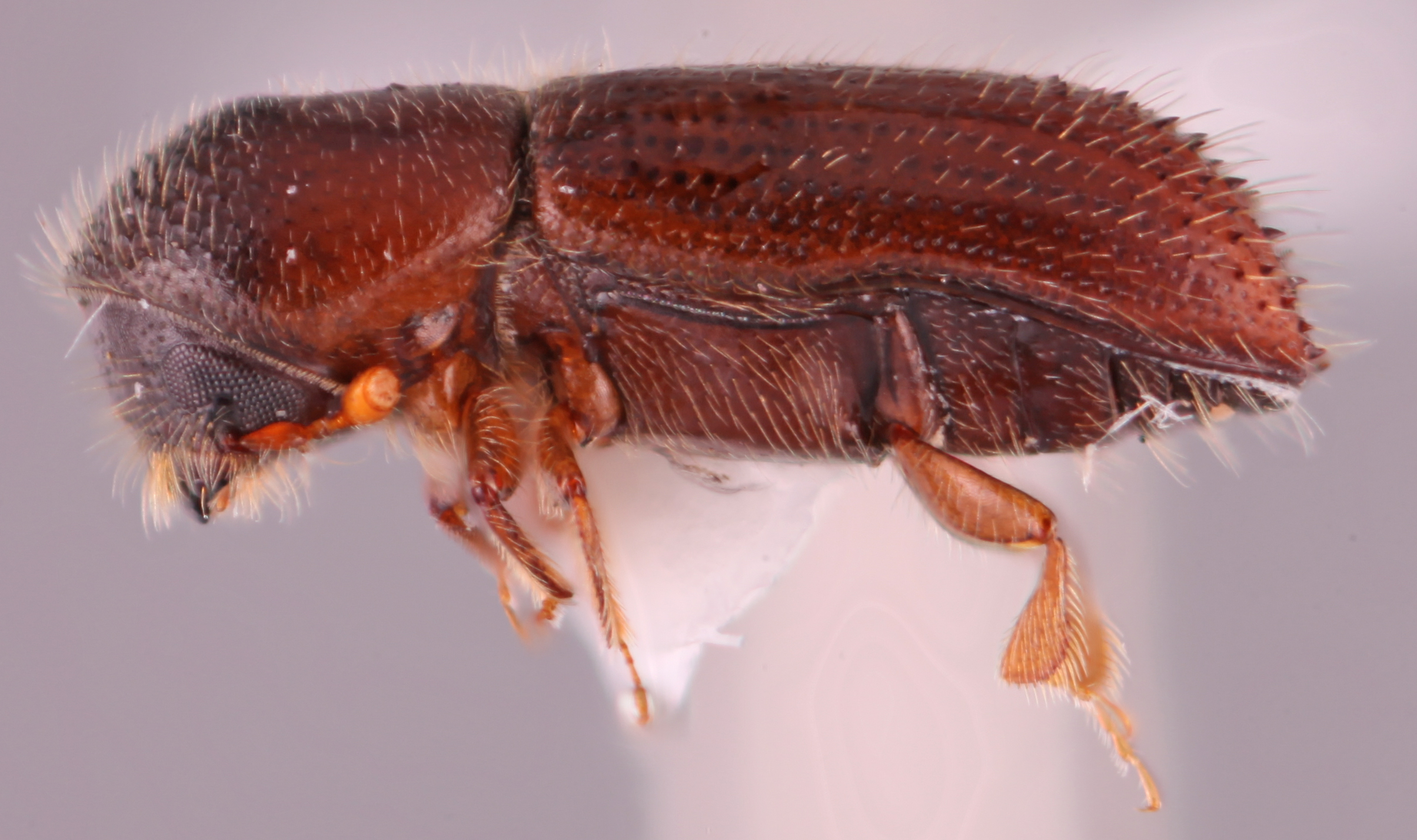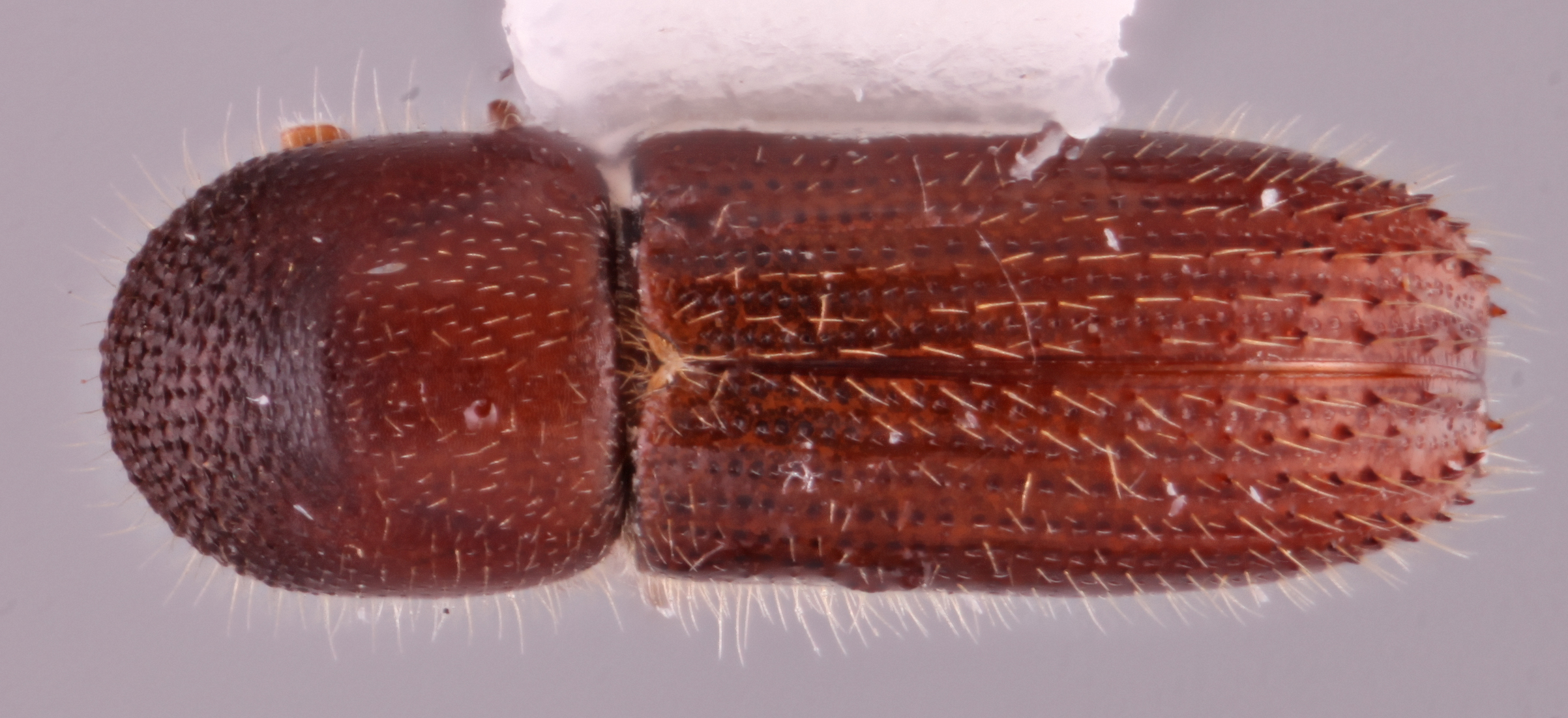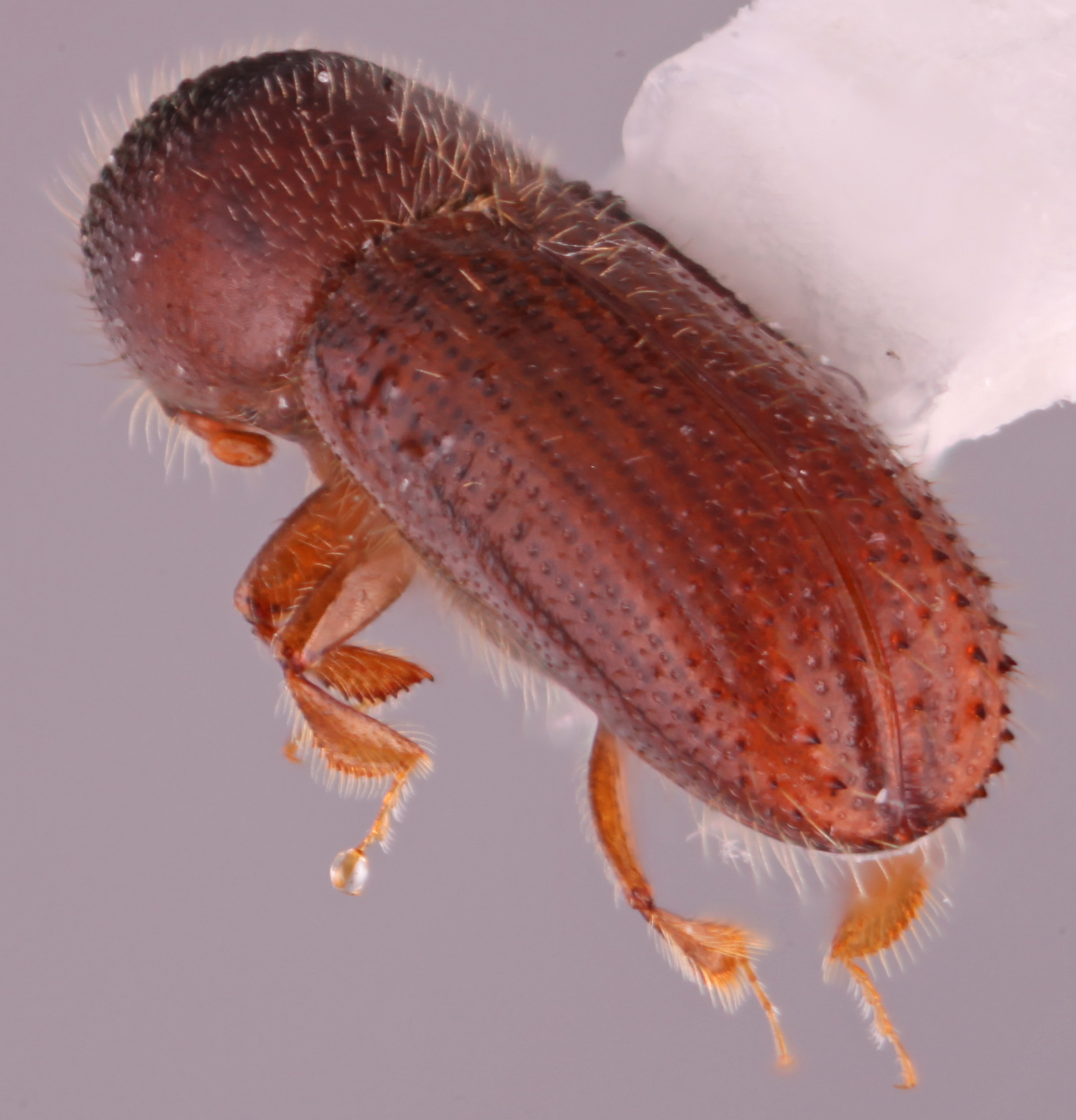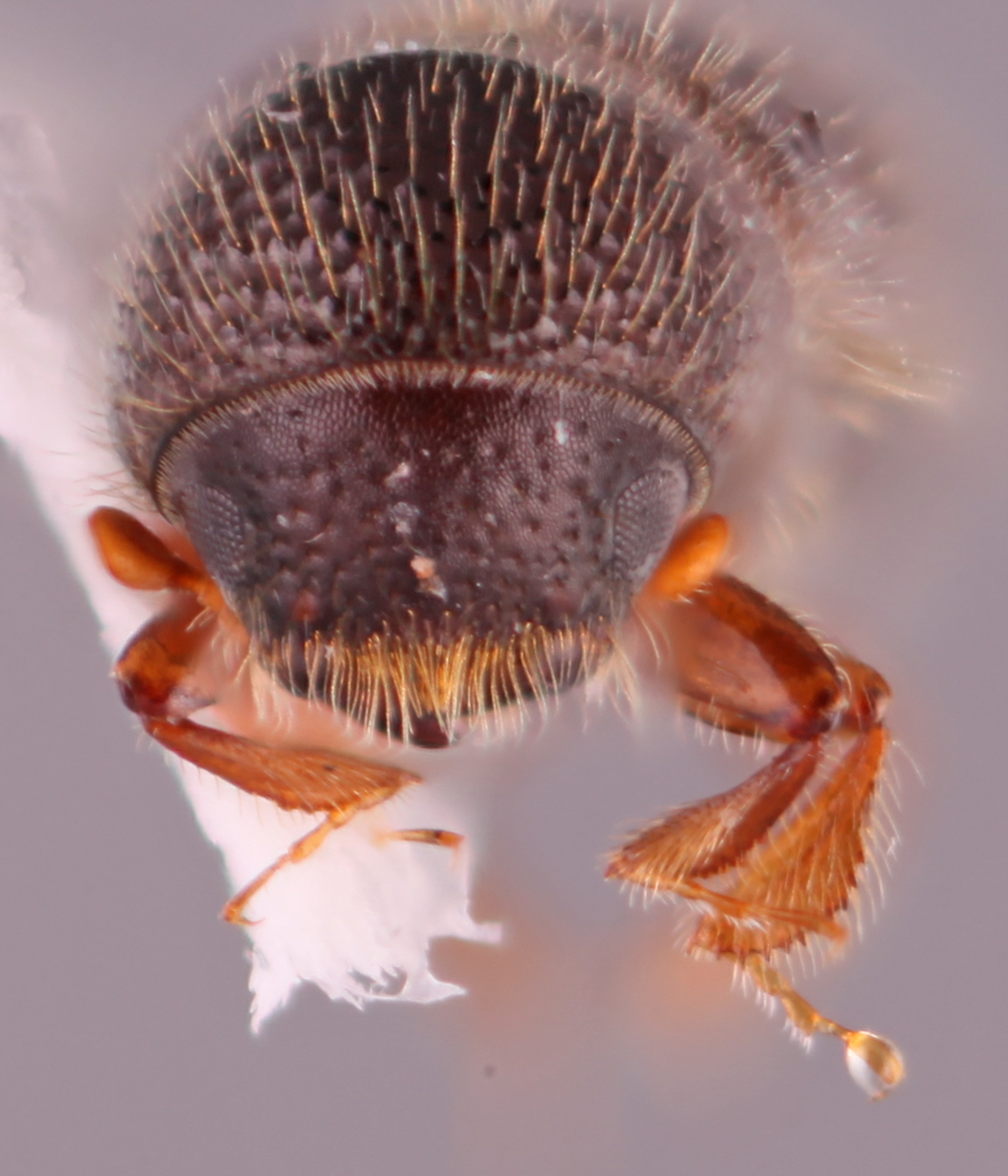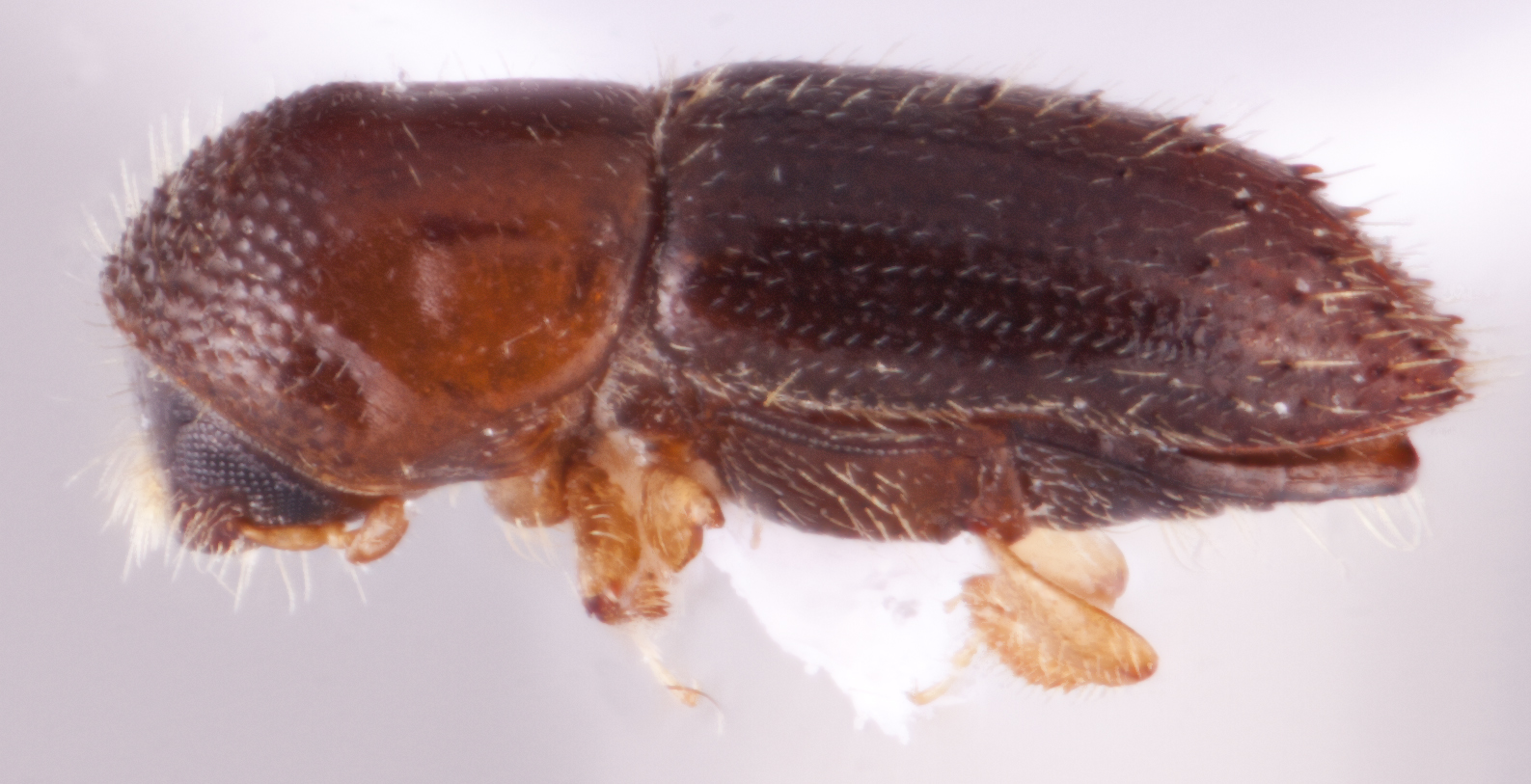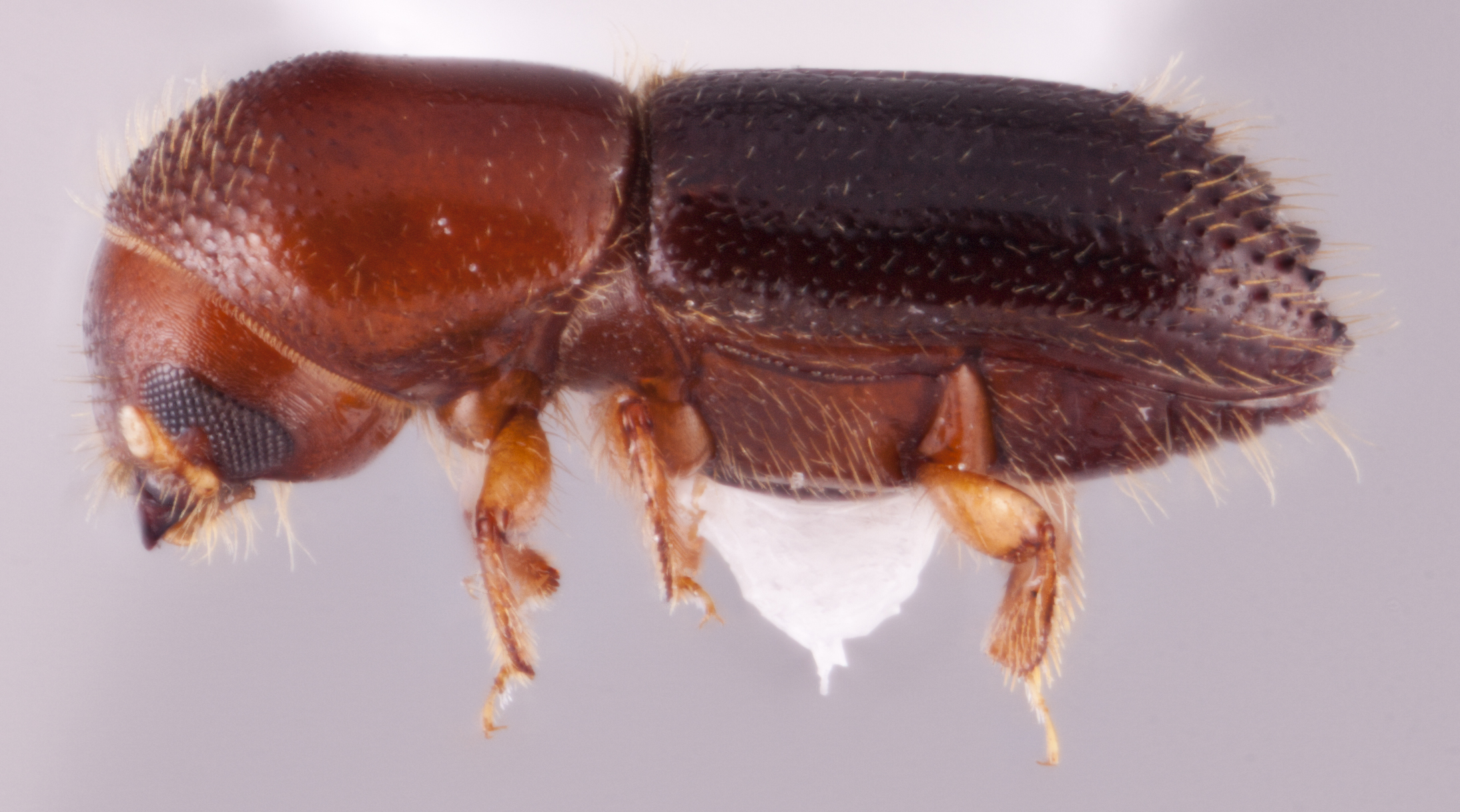Xyleborinus
|
Xyleborinus attenuatus; S.M. Smith |
|
Xyleborinus attenuatus; S.M. Smith |
|
Xyleborinus attenuatus; S.M. Smith |
|
Xyleborinus attenuatus; S.M. Smith |
|
Xyleborinus andrewesi; R.K. Osborn |
|
Xyleborinus spinipennis; R.K. Osborn |
|
Xyleborinus artestriatus; R.K. Osborn |
Taxonomy
Xyleborinus Reitter, 1913: 83.
Diagnosis
Typically small and elongate, 1.60−3.10 mm long; 2.30−3.40 times as long as wide). Xyleborinus are most readily distinguished by the unique scutellumscutellum:
a shield-like sclerotized plate located at the midpoint of the elytral base
and elytralelytral:
pertaining to the elytra
mycangia: scutellumscutellum:
a shield-like sclerotized plate located at the midpoint of the elytral base
minute, conical, disconnected from elytraelytron:
the two sclerotized forewings of beetles that protect and cover the flight wings
and mycangium which opens adjacent to scutellumscutellum:
a shield-like sclerotized plate located at the midpoint of the elytral base
. In addition the antennalantennal:
pertaining to the antennae
club is obliquely truncateobliquely truncate:
nearly truncate but rounded not flat in lateral view
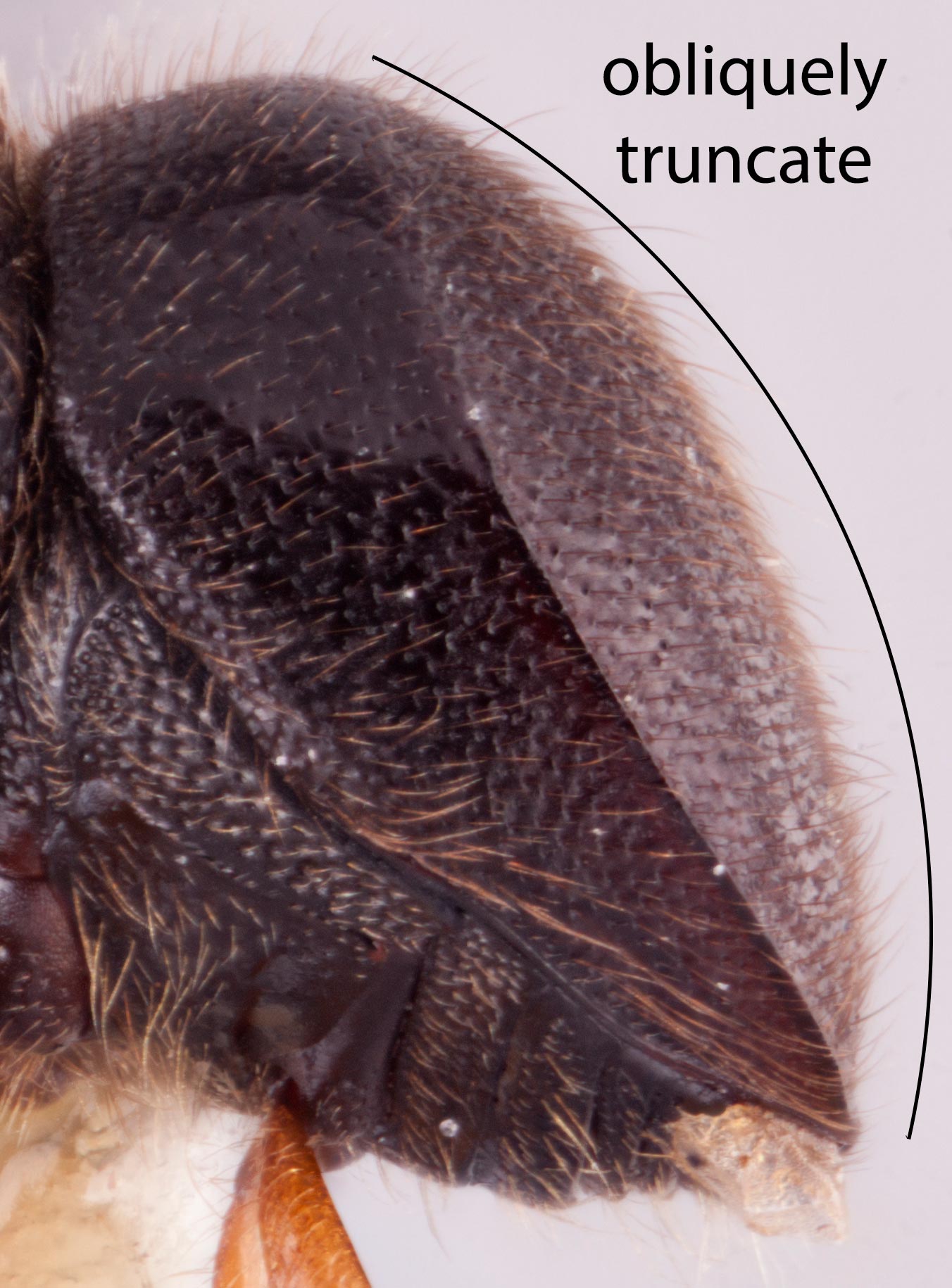 with segment 1 corneouscorneous:
with segment 1 corneouscorneous:
horn-like; applied to antennal club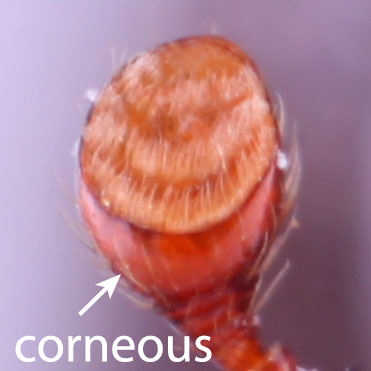 and dominant on both sides of the clubclub:
and dominant on both sides of the clubclub:
the broadened, flattened end of antenna, in Xyleborini comprised of three segments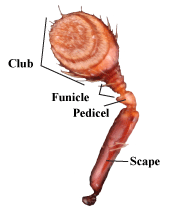 (type 1); protibia obliquely triangular; and procoxae contiguous.
(type 1); protibia obliquely triangular; and procoxae contiguous.
Southeast Asian Heteroborips species have elytralelytral:
pertaining to the elytra
mycangium opening adjacent to the scutellumscutellum:
a shield-like sclerotized plate located at the midpoint of the elytral base
, but the scutellumscutellum:
a shield-like sclerotized plate located at the midpoint of the elytral base
is never minute, conical, and disconnected from the elytraelytron:
the two sclerotized forewings of beetles that protect and cover the flight wings
.
May be confused with
Cryptoxyleborus, Heteroborips, Microperus, and Xyleborus
Distribution
widespread throughout temperate and tropical regions of the world
Gallery system
In many species, a short unbranched entrance tunnel leads to a brood chamber in the longitudinal plane; in others, such as X. artestriatus, the tunnel branches and there are several small brood chambers (Browne 1961bBrowne 1961b:
Browne FG. 1961b. The biology of Malayan Scolytidae and Platypodidae. Malayan Forest Records 22: 1-255., Schedl 1963aSchedl 1963a:
Schedl KE. 1963a. Scolytidae und Platypodidae Afrikas. Band II. Familie Scolytidae (Fortsetzung), Unterfamilie Ipinae (Fortsetzung). Revista de Entomologia de Moccedil;ambique 5: 1-594.). The brood chamber is enlarged by the larvae as they develop.

